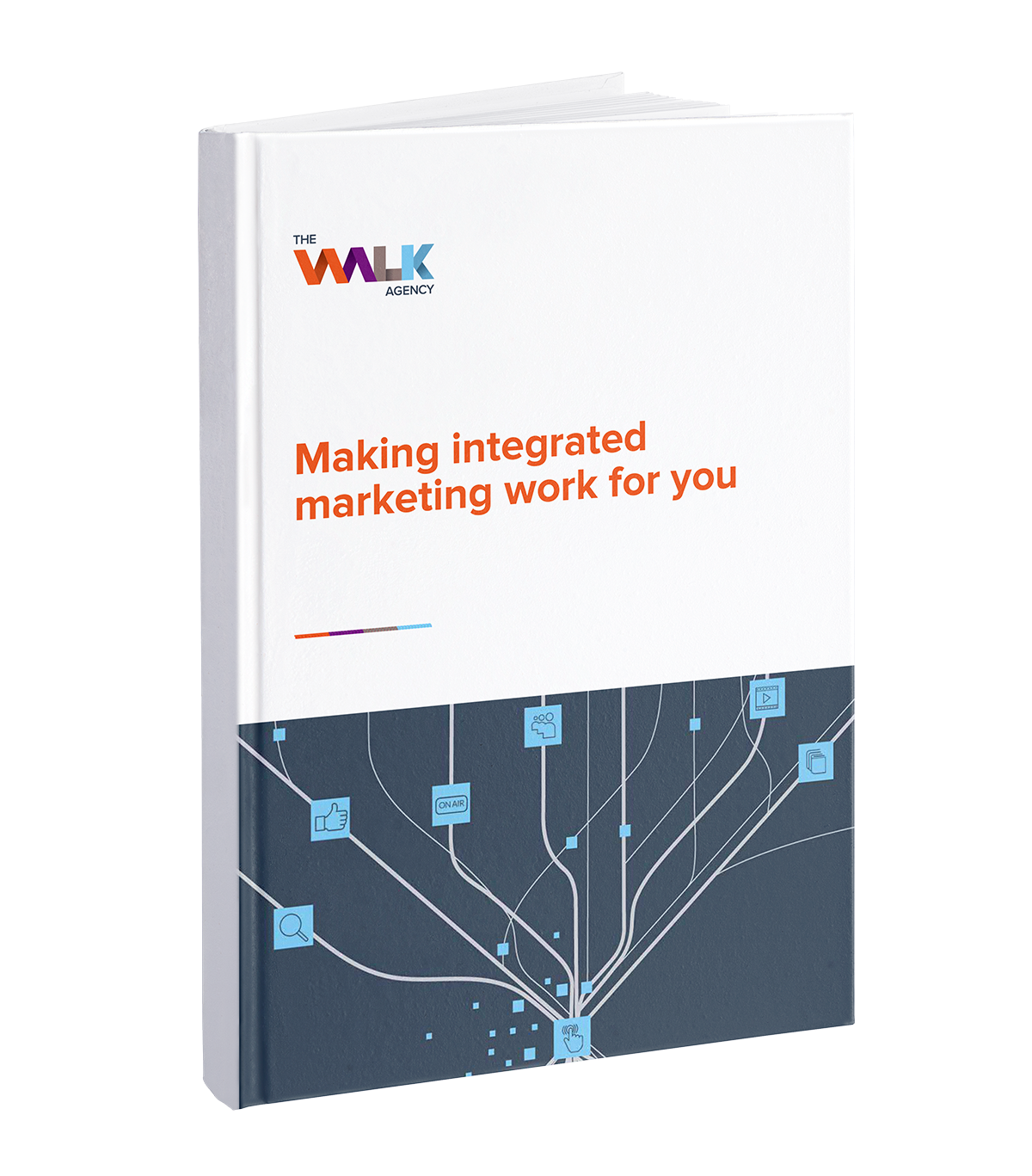We now live in a post-third-party cookie world where intrusive cookies are considered a violation of our privacy as consumers. In this article, we take a look at what this change means for marketers, and reveal how it’s now (thankfully) forcing us to focus on what really matters to consumers.

For marketers, the death of third-party cookies has posed challenges to capturing and optimising customer data for business purposes. More recently, Apple iPhone’s controversial ‘App Tracking Transparency feature’, put a spotlight on consumer rights to opt-in or opt-out of sharing their iPhone activity and websites with businesses. It also highlighted the tensions between zero-party data (ZPD), first-party data (FPD), and second-party data (SPD). The upside? Businesses have been forced to rethink their strategies when it comes to staying relevant and innovative strategies are paying off. A key component lies in capturing meaningful customer data, allowing you to speak to your audience more directly. We look at how businesses such as Uber and Apple, are using ZPD to enrich the lives of their customers and enhance their brand values, via increased trust and transparency, relevant content, and better customer experiences.
1. Zero-Party Data and Apple’s ‘App Tracking Transparency’ feature
According to a recent Forrester report, zero-party data (ZPD) is data that a customer intentionally and proactively shares with a brand. This might include preference centre data, purchase intentions, personal context, and how the individual wants the brand to recognise them. ZPD differs from first-party data (FPD) which is audience data collected (and owned) by brands during their interactions with customers. Second-party data (SPD) on the other hand, is any source data that is collected and owned by a brand. In contrast, ZPD is where customers grant companies the right to use their data for a particular intent or value exchange – an opportunity clever brands are taking advantage of.
“
Apple is committed to increasing its level of trustworthiness by maintaining a higher level of transparency.
”
When Apple announced its ‘App Tracking Transparency’ feature as part of its latest iPhone update, iOS 14.5 in May 2021, marketers and business owners around the globe went into panic mode. Apple’s decision to notify consumers about their choice to allow apps and websites to track their activity was undoubtedly controversial. After announcing the feature in June of 2020, Apple had delayed its installation, allowing developers more time to adapt to the new changes.
Developers can no longer legally rely on tools used to track app users, nor can they use their data to infer information about individual consumers or consumer demographics (e.g., via retargeting). As a result, tensions have flared between Apple and its competitors, like Facebook, who can no longer sell their advertisement opportunities to other businesses. According to Flurry data Analytics, a staggering 96% of Apple users in the US have decided to turn their tracking off. Interestingly, Australians opt-out rates are lower, sitting at 90%.

While these results may feel like a blow for marketing and advertising professionals, Apple is committed to increasing its level of trustworthiness by maintaining a higher level of transparency. In turn, they’ve forced other companies to consider their brand values.
2. Brand values: trust and transparency
According to Forbes, “Over 90% of consumers say transparency by a brand is important to their purchase decisions.” So much so, that “94% of all consumers are more likely to be loyal to a brand when it commits to full transparency.” For consumers who are tired of having their data stolen without their knowledge, a transparent marketing approach is incredibly refreshing.
Historically, Patagonia has demonstrated its trustworthiness through transparent communications around sustainability. As Forbes notes, the brand has been clear about its business mission which is to protect the environment and inspire social change. The brand has connected with consumers beyond the selling of clothes. Patagonia used their consumer database as inspiration for Patagonia Action Works – a platform where environmentally-minded individuals can connect and work on environmental issues within their community. By communicating a clear brand purpose and environmental action, Patagonia connected with its loyal consumer base on a whole new level.
Another way Patagonia used their consumer data effectively, whilst reflecting their social and climate justice values is in their ‘FairTrade campaign.’ In 2014, Patagonia transitioned to working exclusively with Fair Trade Certified Factories. The FairTrade campaign cuts through, holding up a mirror to business owners and consumers with one question: “how is your clothing made?” By demonstrating the company’s stance against working with garment workers and farmers – paid some of the lowest wages in the world – they showed that a commitment to Fair Trade can make a difference. Seeking to rectify economic disparity, Patagonia took its mission one step further. They garnered consumer insights and moved towards real social action, deciding to pay a premium to improve their workers’ communities and elevate their standard of living. If you’re based in Melbourne, you’ll know you don’t need to search too far before you spot a Patagonia jacket on a chilly day.
3. Personalisation: relevant content and experiences
Personalised messages are known to yield a higher ROI when it comes to delivering our desired content and experiences to consumers. Tweaks to your email campaigns, like including a customer’s name, or using individual employee names to sign off an email – as opposed to a multinational business name – can make your content feel more meaningful to consumers. But brands that take that even further, are set to reap the rewards. We are now witnessing some of the best personalised experiences based on consumer behaviour and data. In other words, businesses are using ZPD from their consumers to enhance their experiences and in doing so, encourage repeat business.
“
Businesses are using ZPD from their consumers to enhance their experiences and in doing so, encourage repeat business.
”
Uber collects an enormous amount of data for each consumer that uses the app: their home address, destination list, their food preferences, and now much more. Uber’s guidelines state, “Uber uses your personal data in an anonymised and aggregated form to closely monitor which features of the Service are used most, to analyze usage patterns and to determine where we should offer or focus our Service.” Uber has afforded its users efficiencies like approximate wait times for riders and tips on busy ride areas, for more frequent and higher driver fares.

‘Uber Experiences’ is an example of how to use customer data effectively and develop new customer experiences that generate repeat business. If you’ve ever used Uber before, you know that the music you listen to during your trip plays a large part in your ride experience. In March 2015, Uber announced it would permit app developers to incorporate an Uber button into their interfaces. It was the first time they introduced third-party companies, such as Spotify, to access its interface and recommend content such as playlists and news updates that fit the duration of that Uber ride. An Uber report by Button, reported an 11% increase in the time spent by riders within the Uber app.
Another memorable example of user experience is, of course, Uber Eats – a merging of the original rideshare app and traditional home delivery – and a genius solution to long delivery wait times. Since its launch in 2016, Uber Eats continues to evolve. Product manager, Chetan Narain, reflected on data that indicated Uber users were spending far more time on the Uber Eats app as opposed to its original predecessor. These findings indicate that food purchases tend to be more of an emotional decision compared to rideshare which is more transactional.

In addition to the increased time spent on the Uber Eats app, design researcher at Uber, Hilary Hoeber says, “People eat with their eyes.” This insight influenced the future design of the app, as Uber transitioned to a more visual interface. The app homepage is now categorised by a host of international cuisines that engage consumers via colourful food photography.
Patagonia, Apple and Uber are three global brands that effectively used ZPD to improve consumers’ experiences of their product or service and in turn, encouraged repeat app usage, purchases, and engagement. Ultimately, if you’re a brand that wants to resonate with consumers, living in a post-third-party-cookie world, it’s important you consider how you’re communicating your brand values. Trust, transparency, and personalised content, relevant to consumer needs and experiences is becoming a non-negotiable for consumers in a post-cookie world.
For many marketers, this will cause a shift in how they work, but from our perspective, we’re thrilled to live in a post-third-party cookie world. We now must take the high road and deliver genuinely useful content that’s personal, and therefore more relevant and engaging.





